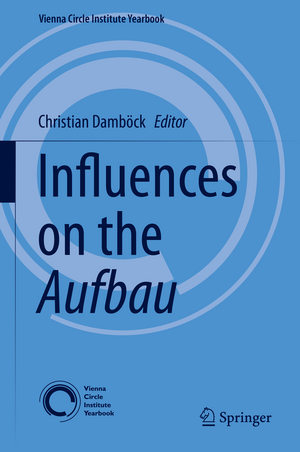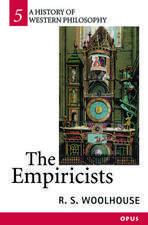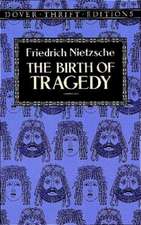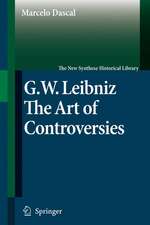Influences on the Aufbau: Vienna Circle Institute Yearbook, cartea 18
Editat de Christian Damböcken Limba Engleză Hardback – 6 ian 2016
| Toate formatele și edițiile | Preț | Express |
|---|---|---|
| Paperback (1) | 641.38 lei 6-8 săpt. | |
| Springer International Publishing – 30 mar 2018 | 641.38 lei 6-8 săpt. | |
| Hardback (1) | 647.59 lei 6-8 săpt. | |
| Springer International Publishing – 6 ian 2016 | 647.59 lei 6-8 săpt. |
Din seria Vienna Circle Institute Yearbook
- 24%
 Preț: 797.69 lei
Preț: 797.69 lei - 18%
 Preț: 964.86 lei
Preț: 964.86 lei - 18%
 Preț: 954.93 lei
Preț: 954.93 lei - 15%
 Preț: 645.47 lei
Preț: 645.47 lei - 15%
 Preț: 644.30 lei
Preț: 644.30 lei - 15%
 Preț: 641.85 lei
Preț: 641.85 lei - 18%
 Preț: 948.16 lei
Preț: 948.16 lei - 15%
 Preț: 636.30 lei
Preț: 636.30 lei - 15%
 Preț: 652.49 lei
Preț: 652.49 lei - 15%
 Preț: 644.63 lei
Preț: 644.63 lei - 18%
 Preț: 953.82 lei
Preț: 953.82 lei - 15%
 Preț: 583.78 lei
Preț: 583.78 lei - 18%
 Preț: 736.16 lei
Preț: 736.16 lei - 18%
 Preț: 1027.20 lei
Preț: 1027.20 lei -
 Preț: 383.71 lei
Preț: 383.71 lei - 18%
 Preț: 788.41 lei
Preț: 788.41 lei - 18%
 Preț: 944.51 lei
Preț: 944.51 lei - 18%
 Preț: 725.43 lei
Preț: 725.43 lei - 18%
 Preț: 950.96 lei
Preț: 950.96 lei - 24%
 Preț: 760.13 lei
Preț: 760.13 lei - 15%
 Preț: 705.51 lei
Preț: 705.51 lei - 18%
 Preț: 954.14 lei
Preț: 954.14 lei - 18%
 Preț: 1391.97 lei
Preț: 1391.97 lei - 18%
 Preț: 959.19 lei
Preț: 959.19 lei - 18%
 Preț: 954.77 lei
Preț: 954.77 lei - 18%
 Preț: 955.40 lei
Preț: 955.40 lei - 18%
 Preț: 954.93 lei
Preț: 954.93 lei
Preț: 647.59 lei
Preț vechi: 761.87 lei
-15% Nou
Puncte Express: 971
Preț estimativ în valută:
123.93€ • 128.91$ • 102.31£
123.93€ • 128.91$ • 102.31£
Carte tipărită la comandă
Livrare economică 12-26 aprilie
Preluare comenzi: 021 569.72.76
Specificații
ISBN-13: 9783319218755
ISBN-10: 3319218751
Pagini: 304
Ilustrații: VIII, 304 p. 26 illus.
Dimensiuni: 155 x 235 x 19 mm
Greutate: 0.62 kg
Ediția:1st ed. 2016
Editura: Springer International Publishing
Colecția Springer
Seria Vienna Circle Institute Yearbook
Locul publicării:Cham, Switzerland
ISBN-10: 3319218751
Pagini: 304
Ilustrații: VIII, 304 p. 26 illus.
Dimensiuni: 155 x 235 x 19 mm
Greutate: 0.62 kg
Ediția:1st ed. 2016
Editura: Springer International Publishing
Colecția Springer
Seria Vienna Circle Institute Yearbook
Locul publicării:Cham, Switzerland
Public țintă
ResearchCuprins
Chapter 1: External World Problems: The Logical Construction of the World and the ‘Mathermatical Core of the External World Hypothesis’; Alan Richardson.- Chapter 2: What Carnap Might Have Learned From Weyl; Thomas Ryckman.- Chapter 3: Wiener and Carnap: A Missed Opportunity? Sébastien Gandon.- Chapter 4: Neurath’s Influence on Carnap’s Aufbau; Thomas Uebel.- Chapter 5 : Theories of Order in Carnap’s Aufbau ; Paul Ziche.- Chapter 6: Carnap’s Aufbau and the Early Schlick; Matthias Neuber.- Chapter 7: Carnap’s Aufbau in the Weimar Context; Thomas Mormann.- Chapter 8: Gätschenberger on the “Given” and Carnap’s Aufbau; Elena Tatievskaya.- Chapter 9: Carnap and Phenomenology: What Happened in 1924? A. W. Carus.- Chapter 10: Rudolf Carnap and Wilhelm Ostwald; Hans Joachim Dahms.- Chapter 11: The Context of the Development of Carnap’s Views on Logic up to the Aufbau; Clinton Tolley.- Chapter 12: Objectivity and Understanding: A New Reading of Carnap's Aufbau; Iulian Toader.- Chapter 13: Assessing Rickert’s Influences on Carnap; Mikko Leinonen.
Notă biografică
Christian Damböck studied philosophy in Vienna with added focuses on mathematics and history. He received his PhD at the University of Vienna in 2005 with a dissertation on philosophical logic. From 2002 to 2011 he worked at the Institute Vienna Circle (University of Vienna) in several research projects, all funded by the Austrian Science Fund (FWF), and directed by Friedrich Stadler. Recently he started working as an FWF researcher in the research project “Wilhelm Dilthey and Rudolf Carnap” (FWF research grant P24615) which is also located at the Institute Vienna Circle. In Spring term 2015 he will be Visiting Fellow at the Center for Philosophy of Science, University of Pittsburgh. Christian’s main areas of research are history of philosophy and philosophy of science in the 19th and 20th century in central Europe; methodological questions in philosophy and philosophy of science; history and philosophy of logic; philosophy of the humanities; the philosophies of Wilhelm Dilthey, Hermann Cohen, Rudolf Carnap, Thomas Kuhn and Wolfgang Stegmüller.
Textul de pe ultima copertă
This volume offers 11 papers that cover the wide spectrum of influences on Rudolf Carnap’s seminal work, Der Logische Aufbau der Welt (The Logical Structure of the World). Along the way, it covers a host of topics related to this important philosophical work, including logic, theories of order, science, hermeneutics, and mathematics in the Aufbau, as the work is commonly termed. The book uncovers the influences of such neglected figures as Gerhards, Driesch, Ziehen, and Ostwald. It also presents new evidence on influences of well-known figures in philosophy, including Husserl, Rickert, Schlick, and Neurath. In addition, the book offers comparisons of the Aufbau with the work of contemporary scientists such as Weyl and Wiener as well as features new archival findings on the early Carnap.This book will appeal to researchers and students with an interest in the history and philosophy of science, history of analytic philosophy, the philosophy of the Vienna Circle, and the philosophy in interwar Germany and Austria.
Caracteristici
Examines the wide spectrum of influences on Rudolf Carnap’s seminal work, Der Logische Aufbau der Welt (The Logical Structure of the World) Traces the influences of both well-known and neglected figures in philosophy Offers comparisons of the Aufbau with the work of contemporary scientists such as Weyl and Wiener Features new archival findings on the early Carnap
















